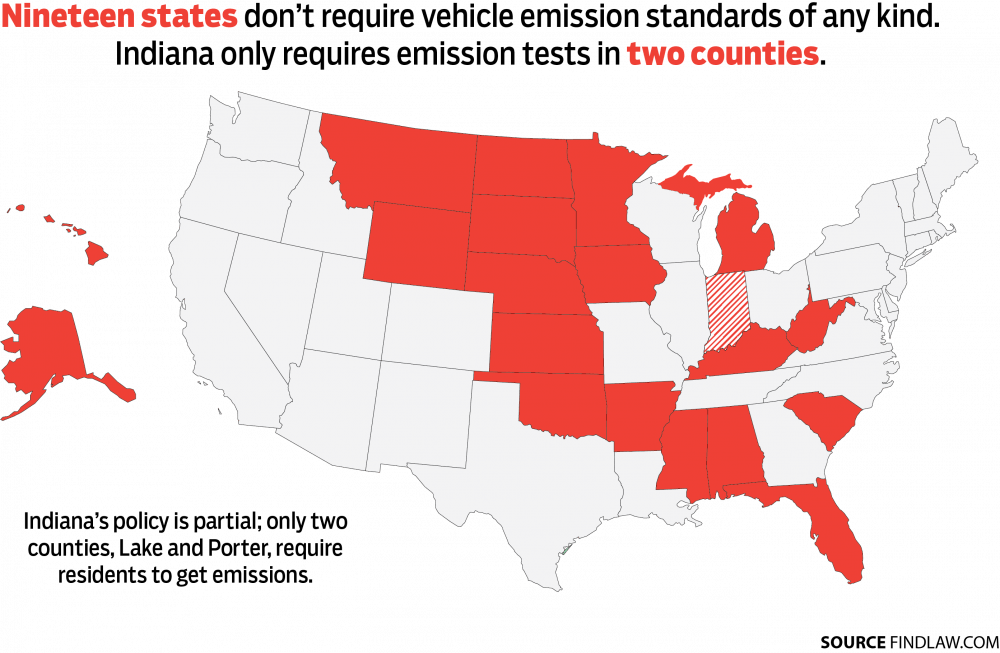Vehicles with glider kits, which involves putting old engines in new trucks, may be able to dodge emission regulations for new motor vehicles if the Environmental Protection Agency passes a proposed rule change in January 2018.
While glider kits are typically only used in commercial trucks, slashing regulations for them could affect the health of all citizens, Kelly Nichols, Mom's Clean Air Force Midwest field consultant said.
She said the move could also lead to further cuts to emission regulations that would cost people money and make fuel-efficient cars less accessible.
A November EPA news release stated the current administration believes the move would undo the "regulatory overreach" of the EPA administration under former President Barack Obama. The EPA estimates 10,000 gliders are on the road.
“Gliders not only provide a more affordable option for smaller owners and operators, but also serve as a key economic driver to numerous rural communities,” the release read.
Current EPA vehicle emissions standards, which have been in place for five years, limit the amount of exhaust cars can give off. The exhaust is measured in grams of pollutant per mile.
Nichols said these standards mean cleaner air, lower carbon emissions and lower health care costs.
She said the standards also save Americans money on gas and offset climate change.
“It impacts people’s lungs and hearts, their finances, their lives,” she said.
In late November, Nichols and other advocates gathered outside the Indianapolis City Market while holding signs that read, “Cleaner cars, cleaner air.” They called on President Trump’s administration to maintain EPA clean car standards.
But Nichols said she is afraid the federal government will roll back requirements.
“People are not being listened to,” she said. “Their health is not being valued.”
Nichols said elected officials may not be thinking about vehicle emissions standards, so it is up to everyone else to put the standards on their radars so that there are no rollbacks.
“We can’t just keep stopping in our tracks,” she said.
The Union of Concerned Scientists estimates vehicle emissions standards have saved Indiana $680 million in the five years they have been in place by requiring better fuel efficiency for personal and commercial vehicles and making fuel-efficient cars more accessible and affordable.
They estimate each Hoosier household will be $2,050 richer by 2030, and the gasoline Indiana will save by that year would be able to fill 8,694 Olympic-sized pools.
Savings are greatest for middle-income families that can save $17,000 in 34 years, according to a 2016 study by researchers at the University of Tennessee.
The union also expects the standards will lead to 20,800 new jobs through the year 2030 because of the job opportunities designing, manufacturing and selling clean cars creates.
But Indiana is also one of less than two dozen states that does not require regular emissions tests on vehicles after they are sold, according to the Bureau of Motor Vehicles.
Only Lake and Porter Counties in Indiana require emissions tests for vehicles. In these counties, drivers must pass BMV emissions tests every other year if they own vehicles that are four years old or older.
Nichols said the automotive industry’s ties to Midwestern states like Indiana may be why the state is more lenient with vehicle emissions.
While she said the auto industry wants to move toward more efficient vehicles because that is what people are demanding, she said companies also do not want to change older vehicle designs to meet standards.
“I don’t understand why people are digging their heels in when this would take money out of people’s pocketbooks and really do some damage to their health,” she said.




